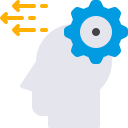Personalization at Scale: Tailoring Every Learner’s Journey
Before a single lesson, smart diagnostics identify strengths and gaps, revealing whether misconceptions are conceptual or procedural. One ninth grader, Leila, finally conquered linear equations after her virtual tutor mapped her error patterns and recalibrated practice with targeted, confidence-building steps.
Personalization at Scale: Tailoring Every Learner’s Journey
As learners demonstrate mastery, the tutor adjusts difficulty, scaffolding, and modalities. Visual thinkers receive diagrams, while verbal learners get narrative explanations. Comment below: which modality clicks for you, and how should AI decide when to nudge versus challenge?





